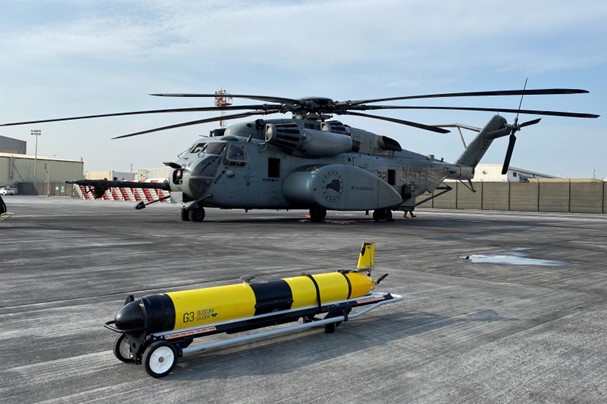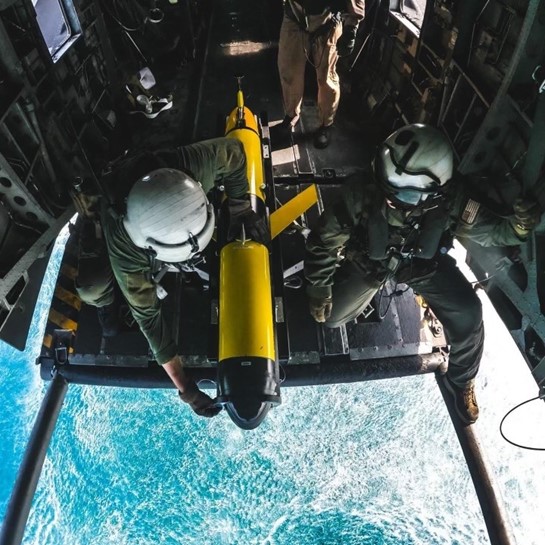Teledyne Marine and the U.S. Navy successfully executed the first-ever undersea glider launch from a helicopter and the first-ever successful deployment from an aircraft. The Teledyne-owned Slocum glider, configured with Littoral Battlespace Sensing – Glider (LBS-G) mine countermeasures (MCM) sensors, was launched from the ramp of U.S. Navy helicopter flying “low and slow” over shallow waters. Teledyne Marine provided Slocum glider piloting and technical support in theater. "We are excited to be a part of another series of firsts! In this instance, the first launch from a helicopter and the first-ever successful glider deployment from an aircraft. Teledyne Marine takes pride in our continued innovation and support of the U.S. Navy as it expands the operational envelope of underwater gliders." said Dr. Thomas Altshuler, Senior Vice President, Global Maritime Defense Strategy and Business Development Teledyne Technologies.
The Mine Countermeasure (MCM) Commander now has the capability for rapid and widespread glider deployment by Task Force elements under direct, tactical control, eliminating the dependency on strategically tasked oceanographic ships. The gliders provide critical environmental information to optimize acoustic and optical MCM sensor performance. This constitutes a revolution in MCM decision support.
The Teledyne Slocum glider is a long-endurance, autonomous undersea vehicle (AUV) used for multiple persistent operational missions, including oceanographic data collection. Teledyne has delivered over 1,000 Slocum gliders to a global customer base. The Slocum glider is the backbone of the US Navy LBS-G program, with over 210 delivered since 2009. The Naval Oceanographic Office (NAVOCEANO) pilots the LBS gliders and includes collected data supporting Navy operations. Until this successful helicopter deployment, LBS gliders were almost exclusively launched and recovered by the T-AGS 60 class multi-mission ocean survey ships.


